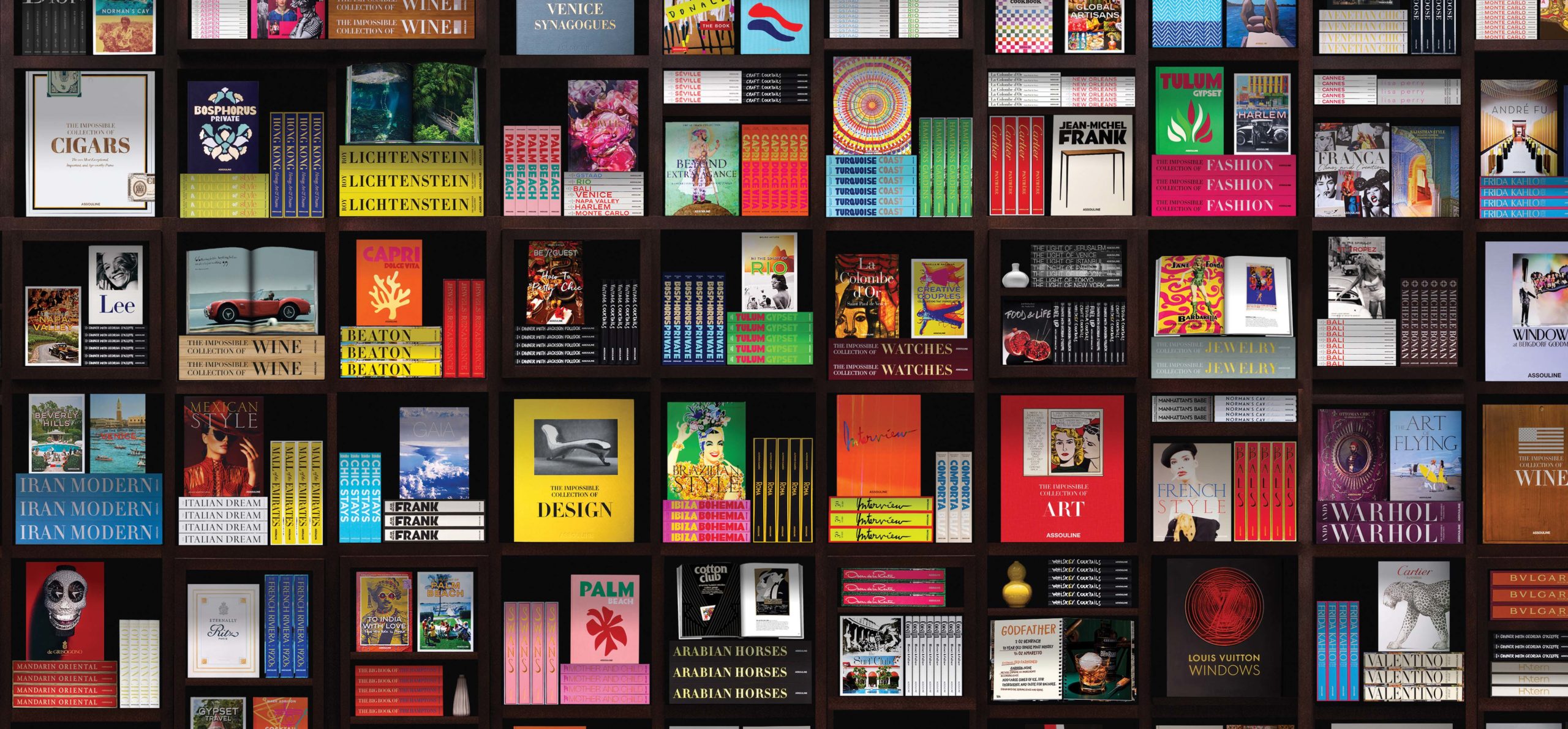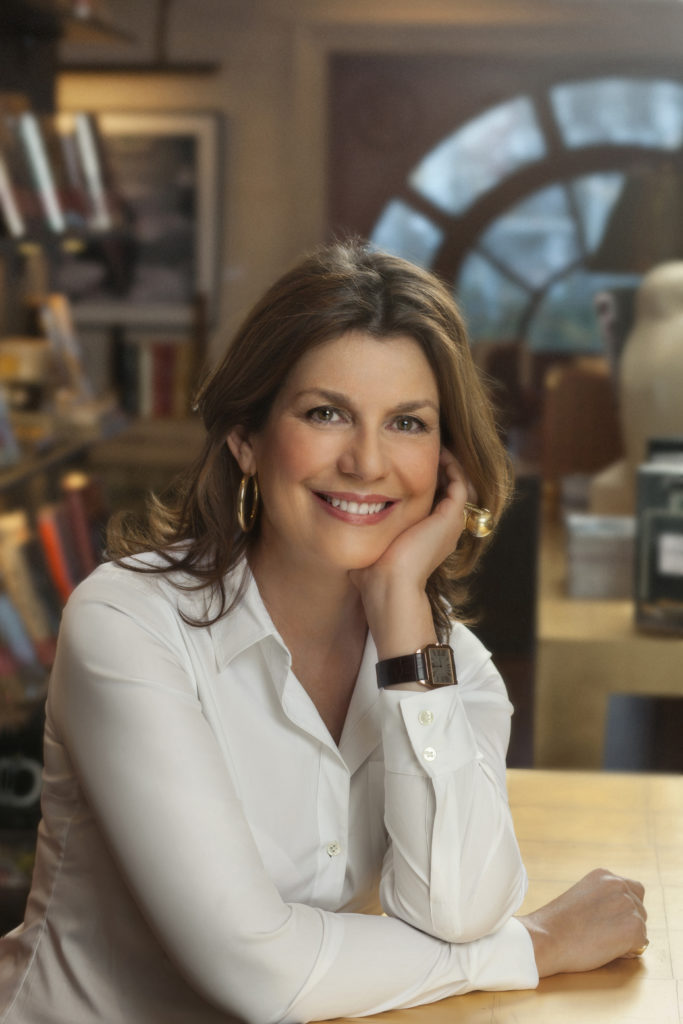December 13th, 2021

Collection of Assouline covers. Courtesy Assouline
In 1994, Parisian couple Martine and Prosper Assouline vacationed with their sons, Sebastien and Alexandre, to La Colombe D’Or, a luxury boutique hotel and restaurant along the French Riviera. Founded in 1920, it was the one of the most popular lodgings for 20th century intelligentsia and artists, particularly during the World Wars; original works of Picasso, Matisse, Satre and Baldwin still line the walls and shelves today, often exchanged for a few nights’ stay.
The Assoulines, cultural connoisseurs and former magazine editors with keen aesthetic eyes, were so drawn to the hotel’s history that they decided to materialize it in the form of a coffee table book, an homage to the resort’s role in French cultural development. La Colombe D’Or: Sant Paul de Vence was the first of their creative editorial endeavors, and today their eponymous publishing house has made over 1,500 books covering art, architecture, fashion, travel, and popular culture, and has featured Chanel, Dior, Goyard, Rolex, Cartier, and Bentley, among others, in their own independent publications.
Assouline’s growth has defied the general downwards trend of the publishing industry, which shrunk by 5.8% over the last five years, as they’ve been able to seize opportunity in the world of luxury printing. Martine, the matriarch at the helm of the house’s robust production and design operation, tells us how they’ve done it, and where she sees the future of publishing, experiential marketing, and luxury branding heading.
“A masterpiece art book is greater than the sum of its parts.”
Martine Assouline, CEO, Maison Assouline
WHAT INSPIRED YOU TO PUBLISH La Colombe D’Or?
Books were our world, and publishing houses like ours didn’t exist at that time. It was 25 years ago, and we were visiting [the La Colombe D’Or hotel] regularly. We told the owners, the Roux family, who were the fourth generation in the business, that we had an idea to create a masterpiece art book telling the hotel’s story. They were so appreciative and supportive of the idea, so we just did it. We did it out of love, passion, and interest, and that is why it was so greatly successful. After that, we decided we wanted to start a publishing house that was more about aesthetic pleasure, which was the original focus of La Colombe D’Or. We decided to do a second and third book that wasn’t just regular marketing for the hotel, but what we saw as “inspired marketing.” It was a beautiful and artistic expression of the hotel’s history and legacy.
BUT YOU DON’T CONSIDER YOURSELF A BRANDING AGENCY.
No, absolutely not. We are an independent publisher, and we really cover only what we like. Mostly we publish about concepts in culture, art, or traveling. But very quickly after our first book, we saw that in order to have a successful business we would need to start with brand partnerships, that we couldn’t make two books a year only about our dreams and muses. But ultimately, we live what we do. Sometimes people will come to us with an idea, but mostly we feature what draws and attracts us—me, Prosper, and now my son, Alexandre.

Martine Assouline, CEO, Maison Assouline. Courtesy Assouline
WHAT OPPORTUNITY DO BRANDS HAVE WHEN THEY PUBLISH WORKS AT THIS ARTISTIC AND CREATIVE LEVEL?
For any book lover at the helm of a major luxury brand today, editorial has the potential to break tradition and bring a nuanced message about the brand. It’s part of the process of constantly creating something new. I remember in the mid-‘90s, we created our first books for Dior and Chanel; besides the fact that we knew about imaging, books and design, we also knew about fashion. And that made the project very interesting, because for the first time, a fashion brand wasn’t just publishing images of runway. Those books were a visual showcase of the spirit of the brand, not just the clothes themselves. We saw opportunity for the brands to tell a new, powerful story at a time where most books were a little bit too...classic.
WITH THE RISE OF DIGITIZED INFORMATION IN THE 21ST CENTURY, WHAT DO YOU SEE AS THE FUTURE OF THE PUBLISHING INDUSTRY?
For the moment, digital isn’t a problem. It’s actually something complementary. Online is really the best way to discover our books. Digitization poses less of a threat to publishers themselves than it does to printers. But even still, at the end of the day digital can’t replace the tactile experience of paper. A masterpiece art book is greater than the sum of its parts; a digital publication most often isn’t. With our books, most of the time they will be closed, and we believe they should offer something then, too. Each one is not just a book, it’s an accessory to your home. That’s why we take tremendous care of the object itself. We regularly travel across the world to find new fabrics for the covers. We carefully select the type of color, the typography, the textiles, the size, et cetera for every work. That’s why there’s been a huge demand for us to curate home libraries. It’s all about detail and experience, and that’s not going away but instead coming in vogue.
HOW DO YOU DEFINE LUXURY?
It’s something extremely personal. For me, it’s about pleasing your eyes, whether it’s through an object you’re really attracted to or your style. Being surrounded by beauty is luxury for me, which itself can be very simple. But it changes for everyone, depending on their sensitivities, their experiences, their education. I’m not impressed by the things that are the most expensive; the price is not the value. I can fall in love with a house that’s worth millions of dollars, but I can also fall in love with a small cabin that’s perfect and fresh on the beach in South America. It’s all really personal.





